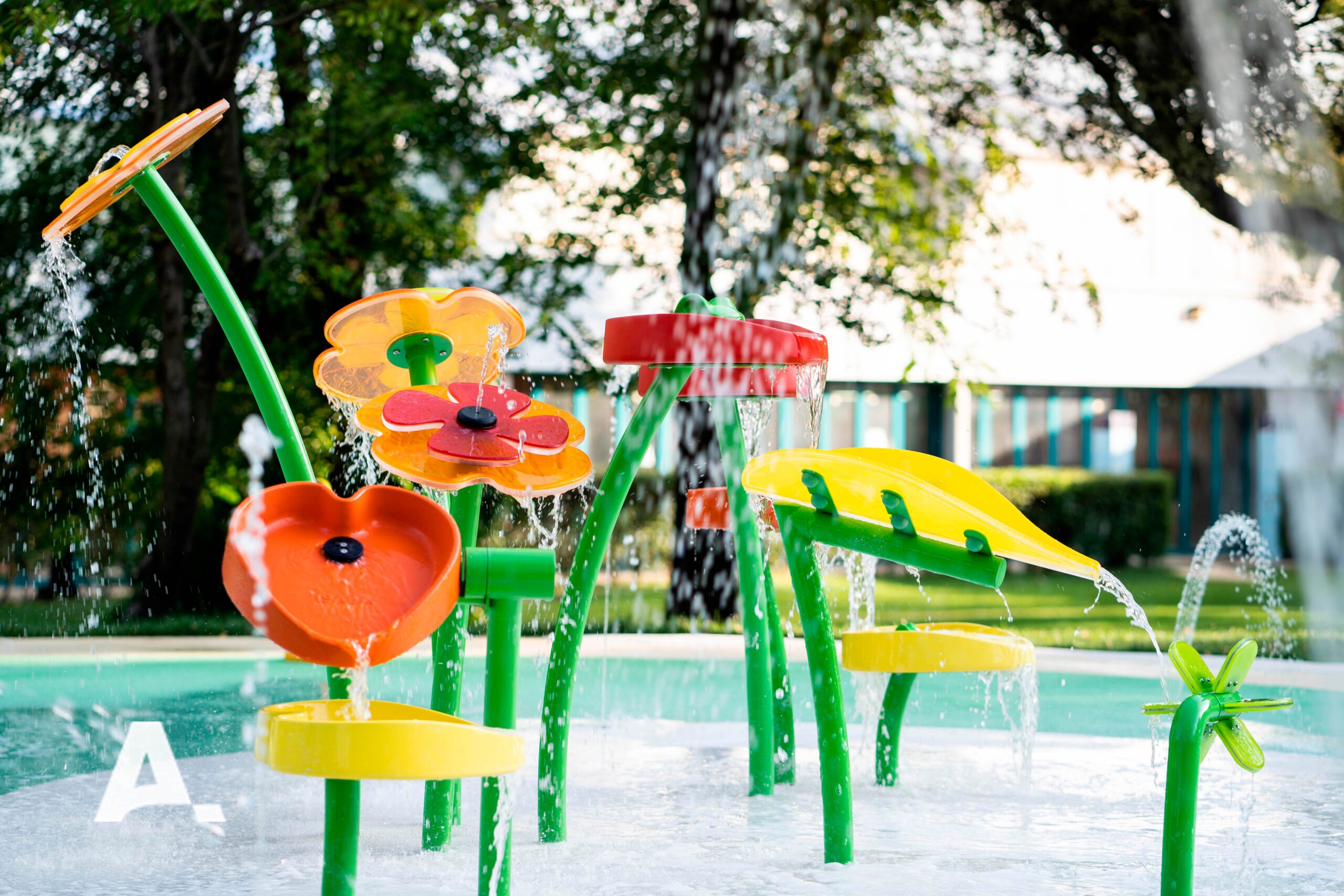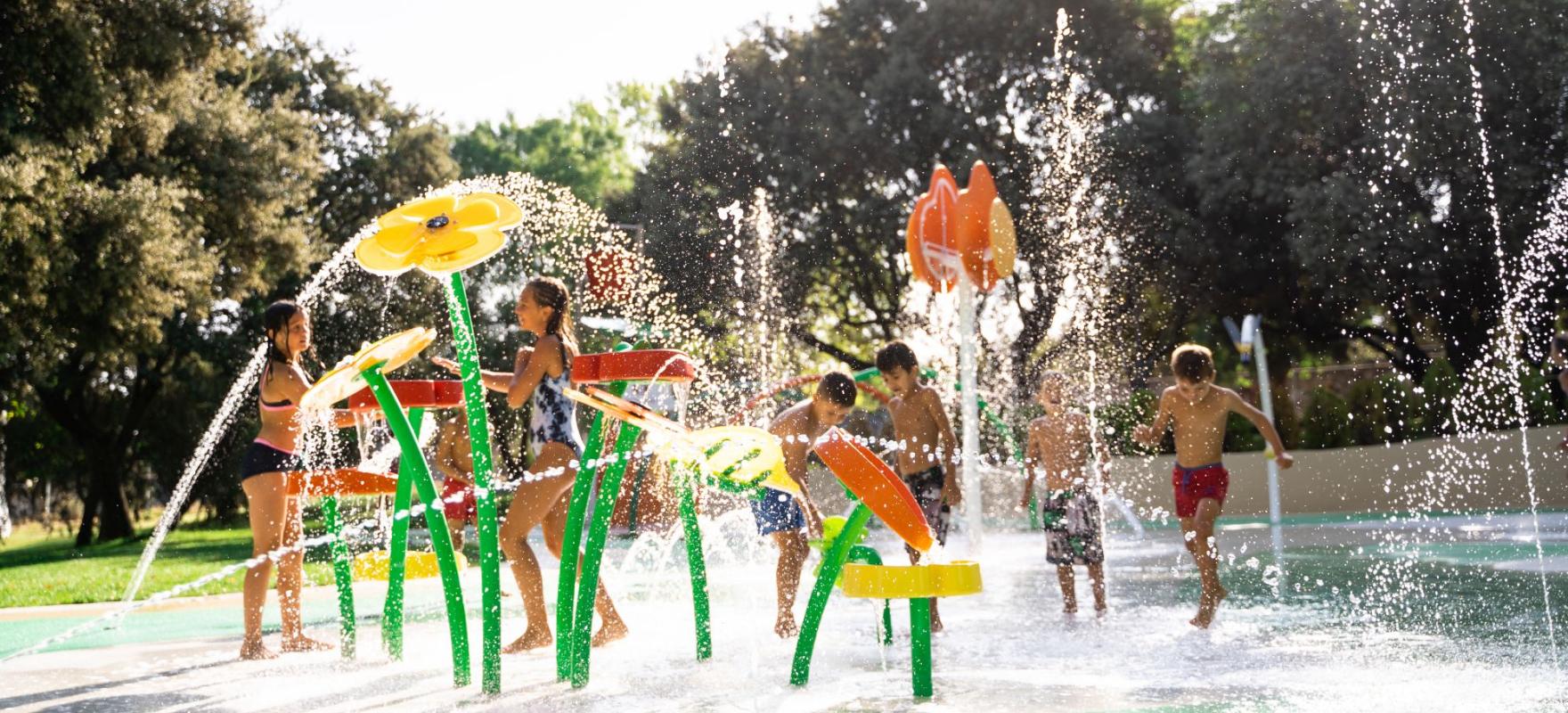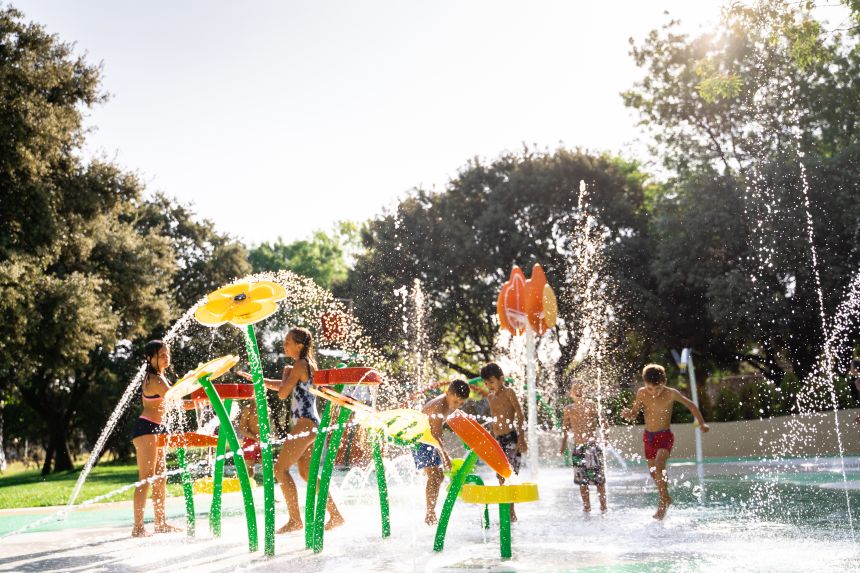If you’re considering a water play project for your hotel, campsite, or resort in 2026, you’re likely to have many questions during our first conversation.
When we meet for the first time, we explain everything about our design, manufacturing, and installation process. We’ll also advise you on your available space and what we believe would work best for your project… and of course, we’ll answer all your questions.
For us, the most important thing is to act as expert advisors so you can feel fully confident about bringing your water play project to life with us.
To help answer the most common questions, we’ve compiled this TOP 10:
“What kind of play elements do you have for different age groups?”
Age segmentation for younger guests is one of the main concerns. We always design our water play projects with dedicated zones by age group, yet integrated as a whole. Because not all ages play the same or have the same abilities, we create leisure areas for everyone.
We offer play elements tailored to different ages, either by adapting existing ones or designing entirely new ones. For the youngest (2–5 years), we’ve created iBaby, a full-featured water play zone with jets, mini slides, water curtains, and low-height elements.
As children grow older (6–8 years), we incorporate more dynamic features: larger structures, water buckets, slides, water cannons, etc. And for the older group (8–12 years), we include zip lines, bridges, and large slides.
“I have this space—will it be enough?”
You don’t need a minimum space to create a play area. We can design a water park in virtually any space, by adjusting the layout, type of solution, park shape, and other key configuration factors.
Each of our projects is unique and comes with its own specific requirements—but in every case, we’re able to create a space that stands out.
“How long does it take to create a water play area?”
While each project is different, all follow the same essential stages. We start with a consultation—where you tell us your needs and we advise you on how to achieve them and how best to configure the space.
From there, we move into the conceptual design phase, which includes the technical aspects of the project. Then comes the construction, installation of play elements, and the final adjustments.
A clear plan and timeline are essential to ensure each phase stays on track. The entire process, from our first “hello” to the grand opening, can range from three months to whatever timeframe is needed.
The key advantage of working with us is that we manage every step of the process—from design and hydraulic engineering to manufacturing and installation—giving us full control and the ability to be faster and more responsive to project needs.
“Can I use the pool I already have?”
Absolutely! If you have a shallow or splash pool, we can adapt it into a water play area. Depending on its size, it can become a fully featured water park or a play zone offering a memorable experience for different age groups.
If your pool is deeper, we can add features geared toward older kids and teens, such as zip lines, bridges, slides, or the Bubble.
“What about water quality systems?”
A pool’s water quality system is designed based on water volume and hydraulic calculations. When adding play elements that spray or move water, these calculations need to be updated. We’ll reassess the system and make any necessary adjustments.
We can also integrate efficiency improvements into your water system to reduce energy use and operational costs. Our digital and remote control system helps optimize maintenance and water quality management—and also enhances play via sequencing modes.
“Does a Splashpark work like water games in a pool?”
A Splashpark offers the same fun and possibilities as a shallow pool. It can host large water structures, slides (thanks to hydro-braking), and customized play elements.
It provides high interactivity, encourages free, accessible play, and is completely safe, as there’s no risk from water depth.
Its operation is similar to that of a pool: both require a hydraulic system that collects, balances, filters, and recirculates water. The difference lies in the volume of water required—pools handle more water than flat, zero-depth surfaces.
“Is this an environmentally responsible solution?”
As climate change becomes a growing concern, environmental standards are no longer just a bonus—they are essential.
From an investment and operational perspective, water zones and pools must now be energy efficient. With energy costs at record highs, cutting consumption is critical. Fortunately, eco-efficient measures often align with modern environmental standards focused on reducing carbon footprints.
Splashparks and shallow play areas enable facilities to modernize while meeting eco and innovation criteria. Their optimal water and energy use make them a compelling choice for both project development and approval.
“What about regulations and safety?”
At Isaba, we comply with all applicable regulations, including:
-
EN 1176 – Playground equipment and surfacing
-
EN 13451 – Pool equipment
-
EN 1069 – Water slides
“Will there be a lot of construction involved?”
Installing a water play area in an existing pool generally requires modifying the pool basin to install anchors, water connections, and possibly adapt the water treatment system.
For Splashparks, civil works are required to install the hydraulic system, anchors, safety surfacing, water drainage system, and finishing details. The same applies if you’re building a brand-new pool.
“And how much does a project like this cost?”
The cost of a water play project depends on several variables: total area, type of solution, number of play elements, installation, water treatment system, etc.
Every project is different, so there’s no single answer. The best approach is to analyze your proposal to determine a customized budget based on your specific needs.
 Instagram
Instagram


